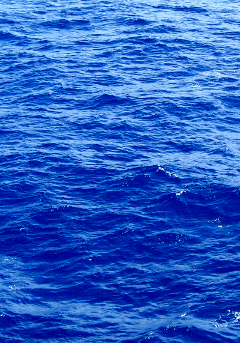Ocean uranium sought
 Australian scientists are working on a simple and effective method for extracting uranium from seawater.
Australian scientists are working on a simple and effective method for extracting uranium from seawater.
A new study, published in Energy Advances, investigates materials that are highly selective, efficient, and cost-effective in capturing uranium.
The oceans hold over a thousand times more uranium than the Earth's surface, but it is incredibly diluted, making extraction challenging.
“The main challenge is that other substances in seawater, salt and minerals, such as iron and calcium, are present in much higher amounts than uranium,” says lead scientist Dr Jessica Veliscek Carolan.
The key to the new approach is adding neodymium to layered double hydroxides (LDHs), which are known for their metal removal capabilities. LDHs can be tailored to capture specific substances due to their positive and negative charges.
Lanthanide dopants, including neodymium, were tested to enhance LDHs' ability to selectively capture uranium from seawater. Importantly, these experiments were conducted under seawater-like conditions.
The research found that neodymium altered how uranium binds to LDHs, resulting in more effective uranium capture.
X-ray measurements showed that uranium removal under seawater conditions involved the formation of complexes on LDH surfaces, replacing nitrate ions with uranyl carbonate anions from the seawater.
This improved ionic bonding significantly enhanced the materials' ability to selectively bind to uranium through ionic surface interactions. The study demonstrated the potential for creating even better materials for uranium separation.
These materials not only promise efficient uranium extraction from seawater but also hold potential for cleaning up uranium from radioactive wastewater near nuclear power plants.
Additionally, their simplicity and cost-effectiveness make them a practical choice for large-scale uranium extraction.
This breakthrough in uranium extraction from seawater opens new possibilities for the nuclear industry and environmental remediation efforts.








 Print
Print